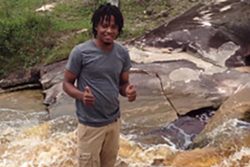The number of children being trafficked for forced labour and sexual exploitation is increasing, according to the United Nations Office on Drugs and Crime’s (UNODC) latest Global Report on Trafficking in Persons, which was released a little over a week ago on February 2. The data compiled in this biennial report revealed that overall, the number of children trafficked has tripled, while the number of boys trafficked has quintupled over the last 15 years.
It is likely too that the current COVID-19 pandemic will see further increases in trafficking and vice versa. The lockdowns and curfews enforced in many countries to stop the spread of the virus and reduce deaths have already led to escalations in domestic violence, uxoricide, suicide, and all forms of child abuse and human trafficking can be linked to several of these crimes. Furthermore, the financial and economic fallout intensifying poverty and its concurrent vulnerability means more people are at risk of becoming trafficking statistics.
Apart from forced labour and sexual exploitation, people are trafficked globally for forced criminal activity, ranging from picking pockets to drug cultivation and trafficking; forced marriage; baby selling and illegal adoptions; for their organs; and for exploitative begging among other forms of abuse. In the movies, trafficking victims are often depicted as having been kidnapped. In real life, however, with the exception of children, they are usually just people faced with the choice of sure poverty and hunger and the lure of a ‘job opportunity’ that might appear to be not above board, or too good to be true. Many take a chance with the latter believing they can extricate themselves if necessary, then find that they cannot and thus remain trapped and threatened until their exploiters are detected by law enforcement. This could range from days to years, depending on their location and situation. The premise, therefore, that the true scope of human trafficking is likely much larger than what is reported, is on target. Guyana is a case in point.
Surprisingly, there was no data from Guyana in the just-released UNODC report. Although a request for same was made through the Foreign Ministry as per normal, there was no response to that request. But that is not to say the data is not available. On the contrary, the United States State Department’s annual Trafficking in Persons report, published in June 2020 had all the latest statistics on human trafficking in Guyana.
According to the State Department’s report, women and children from Guyana, Brazil, the Dominican Republic, Haiti, Suriname, and Venezuela become sex trafficking victims in Guyana’s mining communities in the interior and urban areas. “The government notes a large increase in the number of trafficking victims from Venezuela,” the report said. In addition, it was noted that children were victims of sexual exploitation and forced labour. In the latter case, victims of all ages and sexes were to be found in mining, agriculture, forestry, domestic service, and retail businesses. Further, it stated that most of this occurs in remote communities where the limited presence of authorities renders the full extent of trafficking unknown.
However, for 2019, the State Department report said, Guyana reported 27 new investigations (25 for sex trafficking and two for labour trafficking). The police made 55 arrests in cases of sex trafficking and labour trafficking and continued investigations in 19 trafficking cases.
During 2020, subsequent to the release of the State Department report, there were several instances of human trafficking and suspected human trafficking, including the smuggling of Brazilians through the Iwokrama forest in June and July to avoid checkpoints, where they could be detected by the police.
In addition, speaking at the opening of a virtual training programme for inspectors and managers of the National Insurance Scheme in Trafficking in Persons Victim Identification and Referral at the end of September, Minister of Home Affairs Robeson Benn had disclosed that from January to August 2020, the police had investigated 19 suspected cases of human trafficking, which encompassed 70 alleged victims and 27 suspects. He said 59 of alleged victims were females and 11 were males, but he did not indicate the breakdown of adults and children. In terms of nationality, 45 were Venezuelans, 10 Haitians and 11 Guyanese and they had been allegedly trafficked for sexual and labour exploitation.
On November 13, the police, in association with officers from the Human Services Ministry rescued 19 women and three children, who had been trafficked, at an establishment in Region Three (Essequibo Islands-West Demerara). Earlier, on October 24, police raided the Baroombar, a strip club in Georgetown, where 24 women were discovered: eight from the Dominican Republic, one from Cuba and 15 from Venezuela. Early in November, the police had said that they had found 26 Haitians, seven of whom were children, while investigating a suspected human smuggling and trafficking in persons ring.
Aside from the clear danger of almost slave-like conditions endured by these exploited people, the fact that so many of them are still being smuggled in the height of an ongoing pandemic is catastrophic. It is unlikely that their smugglers and exploiters are following any of the coronavirus guidelines, placing them and others in peril all for the sake of making money.
Unfortunately, human trafficking will remain a problem as long as the buying and selling of humans continue to be profitable. The traffickers will find ways to evade the law, including bribing officials and operating in the shadows. The APNU+AFC administration had announced in 2019 that a new Combating of Trafficking of Persons bill had been drafted under an initiative funded by the US State Department. One imagines that considerable resources have already been expended on this and it should be put to use. Guyana needs every possible tool available to it in this fight.





